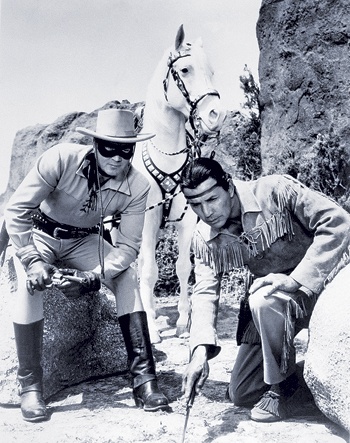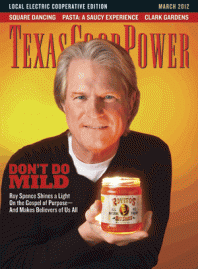If you are among the millions of Texans with a few silver strands in their hair, the call of “Hi, yo, Silver—awaaaay!” may transport you to a long-ago living room furnished with a black-and-white television, where a masked man gallops across the screen bringing desperados to justice. Fans of the Lone Ranger can relive those glorious days of yesteryear at the Texas Ranger Hall of Fame and Museum in Waco.
In 2009, the executor of the Dolores Taylor estate in Montana contacted the museum with an offer too good to refuse. Taylor’s lifelong obsession with the Lone Ranger resulted in a 1,000-item collection of Lone Ranger memorabilia featuring such sought-after pieces as official Lone Ranger boots and an original mask worn by Clayton Moore, the TV actor who portrayed the Lone Ranger. Taylor, a Harvard and Stanford Fellow and surgical pathologist, began collecting Lone Ranger items when she was 9, and the estate offered the valuable collection to the museum as a gift.
“This collection is like a Christmas present,” says Byron Johnson, the museum’s director. “We’re designing a new exhibit to display more of the items for Lone Ranger fans everywhere.”
Created by writer Fran Striker in 1933, the Lone Ranger came to life on radio. George Trendle, owner of WXYZ Radio in Detroit, wanted a Western adventure series, and Striker brainstormed a scenario in which six Texas Rangers, two of them brothers, were ambushed by the fictional Butch Cavendish Gang. Five died, but the sixth—the younger brother—was critically wounded and snatched from the jaws of death by a passing Indian who nursed him back to health. Now the “lone ranger,” the lawman donned a black mask made from his dead brother’s vest so the Cavendish gang wouldn’t recognize him. He set out to seek justice and anonymously righted wrongs wherever he went.
Striker, a New Yorker who also penned The Green Hornet and Sergeant Preston of the Yukon radio series (both later became TV shows), had absolutely no first-hand experience with cowboys or Indians. Historical accuracy took a back seat to the strict moral code established for the character. To the chagrin of history buffs, and indicative of the insensitivity of the times to Native Americans, Tonto, the Lone Ranger’s sidekick, spoke in an embarrassingly inaccurate dialect, using such phrases as “get-um up, Scout” and “you betchum.”
The Lone Ranger became one of the most popular heroes of the 20th century, enduring through 2,596 radio shows, 18 novels, 221 television episodes and several feature movies. His white horse, black mask and silver bullets were known by some in early radio as “shiny things for the mind,” which helped listeners visualize the action. More than 60 percent of listeners were adults, and more than 20 million Americans were tuning in to the popular radio show three times a week by 1939.
An upright man, the Lone Ranger lived by an ethical code not unlike the medieval code of chivalry. He modeled racial and religious tolerance and spoke in grammatically correct sentences. He never took off his mask, never smoked, swore or drank alcohol, and never shot to kill except when he brought down his brother’s murderer. His wild, white stallion, Silver, whom he rescued from the attack of a rampaging buffalo bull, carried him faithfully through countless scrapes with thieves and cutthroats.
In 1949, the Lone Ranger made a seamless transition to television, galloping across American TV screens to the rousing strains of the “William Tell Overture” (also the radio show’s theme music). Starring Moore in the title role and Jay Silverheels as Tonto, the show offered audiences an uplifting hero who triumphed over adversity. A deep friendship developed between Moore and Silverheels, a stuntman and former professional lacrosse player. The pair joked about chase scenes in which Silver quickly outdistanced Tonto’s pinto horse, Scout, a rental horse from a movie supply company. “I could run faster than Scout,” Silverheels quipped.
Two white steeds actually played the part of Silver: One was used for still advertising photos and another for action shots. And Moore got an extra $50 each time Silver reared up on his hind legs for the camera, so you can bet it was Moore in the saddle and not a stunt double.
Striker often infused episodes with real characters from history. Buffalo Bill, Calamity Jane and Teddy Roosevelt helped anchor stories of a fanciful hero to the real world. And the legend continues: A Lone Ranger movie starring Johnny Depp as Tonto is slated for release in May 2013. The Lone Ranger rides again, kemo sabe—faithful friend.
——————–
Martha Deeringer, frequent contributor


